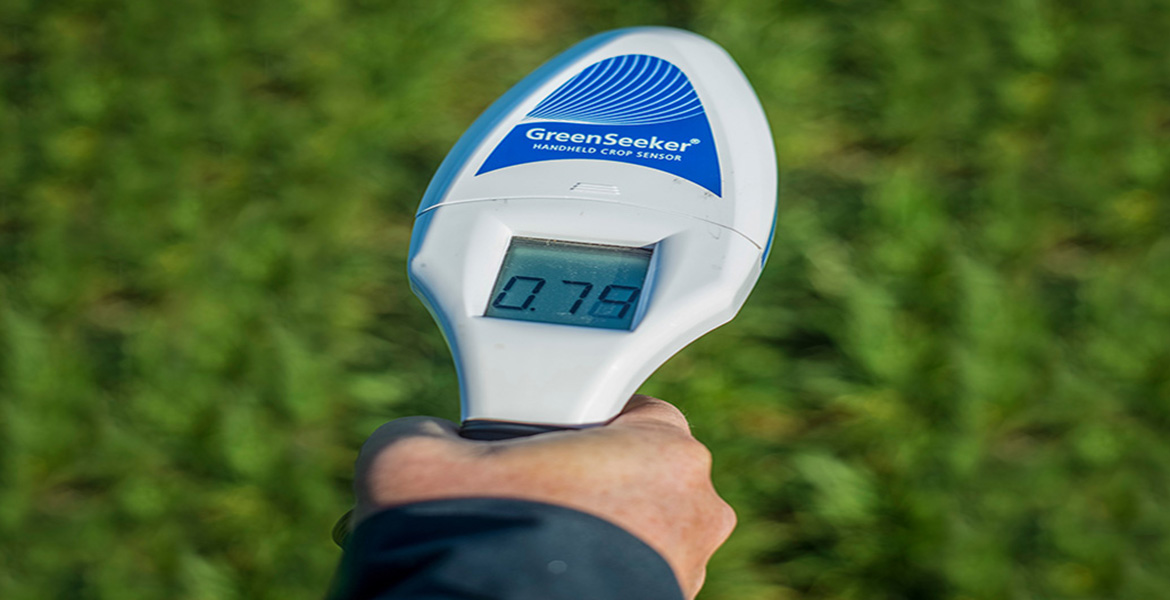
Wheat producers facing tough call on nitrogen application
Monday, March 12, 2018
Even after recent rains, Oklahoma wheat producers managing their crops for yield and grain quality are facing tough decisions about if, when and how much to fertilize at this critical juncture of the growing season.
The good news is producers still have time to act. However, in the wake of an extremely dry fall and winter and the window for fertilizing quickly closing, Oklahoma State University Cooperative Extension experts see three different scenarios taking shape.
In cases where there is good plant stand overall, producers should evaluate the crop’s current yield potential, which could still be decent, and apply enough nitrogen to achieve it.
“With the rain and some sunshine, these plants will start growing again. For producers who use N-rich strips, if your field needs nitrogen, it should show up,” said Brian Arnall, OSU Cooperative Extension precision nutrient management specialist.
Under a second scenario that could play out principally in southwest Oklahoma, some fields may be experiencing uneven growth, with a combination of already established wheat and wheat that has only started germinating and emerging with the most recent rains.
Producers may have a lot of questions about what to do under such circumstances, said David Marburger, OSU Cooperative Extension small grains specialist.
For example, if producers decide to keep the crop, will the newly emerging plants still have enough exposure to cooler temperatures to switch from vegetative growth to reproductive growth, and if so, what is the crop’s yield potential overall?
“This is where it gets complicated, when we bring it back to the question of nitrogen management,” Marburger said. “This is going to come down to producers closely assessing their stands and the yield potential of their crop. I think in most cases those newly emerging plants will switch to reproductive growth and put on a head. However, those plants will be delayed in their development, and the amount of grain produced by those heads will likely not be close to full potential.”
When assessing a field’s grain yield potential, a general rule of thumb is 60 to 70 tillers per square foot are needed to maximize yield. Dryland production in southwest Oklahoma and the Panhandle can lower that number to 50 to 60 tillers per square foot.
“If you have half or less, that’s not a positive sign for taking the crop to grain. If you’re a cattle producer just wanting to graze-out, that may be enough for you to keep the stand,” Marburger said. “It comes back to your objective. If you decide to keep the stand in this case and apply nitrogen, consider lowering the rate from your normal application.”
Meanwhile, a third scenario is emerging in far northwest Oklahoma into the Panhandle, where it has not rained and plants coming out of winter dormancy will begin growing.
“If there’s no water there for those plants, they’re going to quickly go backward and eventually die,” Arnall said. “Producers should have their N-rich strips down in case it does rain soon, but most are likely hesitant to spend money to apply nitrogen to their fields if there’s little to no yield potential.”
For more information on wheat crop management strategies, contact the nearest county Extension office, visit www.wheat.okstate.edu and download free OSU Fact Sheets on the topic, including PSS-2149, “Estimating Wheat Grain Yield Potential,” and AGEC-241, “Wheat Grazeout versus Harvest for Grain,” at facts.okstate.edu.
